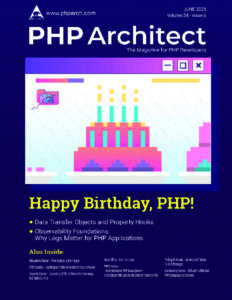Making Flex Builder PHP Friendly
When I first installed Flash Builder 4, it was like coming back to an old friend. Well, that old friend that you had a falling out with and it’s been a while and you don’t really remember why, but you know it was something and you’re still a little annoyed. I say this because this was my exact experience last fall. I was a longtime Eclipse user – easily going on 7 or 8 years – when I tried to upgrade to a newer version of PDT. To make a long story short, I quickly became a Netbeans user.
After my presentations on Flex development using Flash Builder 4 last week, I decided to give Eclipse another shot. Imagine my surprise when once I configured the update sites, it all just worked! In fact, since that time, I’ve been working on web2project and the web2project-air client almost seamlessly across Windows 7 and Ubunutu 9.10. To make your life easier, here’s the process:
To get started, install Flash Builder 4. Once you’ve completed the installation and registration process, close it, and then restart it by right-clicking and selecting “Run as administrator”. That will let the system make changes to the underlying system like installing plugins. This is basically a “sudo” for the Windows world. And just like “sudo”, you don’t want to run Flash Builder like this normally.
Next, under the Help Menu, go to “Install New Software…” At the time of this writing, Flash Builder 4 is built on Eclipse 3.5.1 called “Galileo“. Click “Add”, fill in an update site name and the update location. For this release of Eclipse, we want to use:
http://download.eclipse.org/releases/galileo/
Finding the proper URL for this step was the hardest part but once you see the pattern, it’s actually quite simple. Even better, the Eclipse group is consistent in their naming, so guessing the URLs for other versions is simple. After you save, Eclipse will automatically check the update site for additional plugins to install. CVS and Subversion are in the “Collaboration” group while PDT is under the “Programming Languages” group. Select it, let Eclipse determine the dependencies, and hit “Next” a few times until it’s ready.
Finally, restart Flash Builder in normal (non-Administrator) mode and you’ll have all the Views and Perspectives from both toolsets available. You can create new PHP projects, import existing ones, and explore all of your projects as you see fit. In fact, if you install SVN or even the EGit plugin, you’ll have complete access to all of your repositories. The most important part is that all of your existing refactoring tools and build scripts will immediately be available to you.
From here, you can get creative. If you want to attach XDebug to Apache to Eclipse to analyze your PHP and use Flash Builder’s Network Monitor to log your applications. With this configuration, you end up getting a full trace of all requests and processes from both the client and server end. While this is powerful, it consumes a ridiculous amount of memory, so be selective in how you apply it.
Disclosure: Through Blue Parabola, LLC, I’m working with Adobe and a number of their tools and technologies to see what I might be able to use where. I’m under no obligation to be positive or negative with respect to any particular product or person.






Leave a comment
Use the form below to leave a comment: